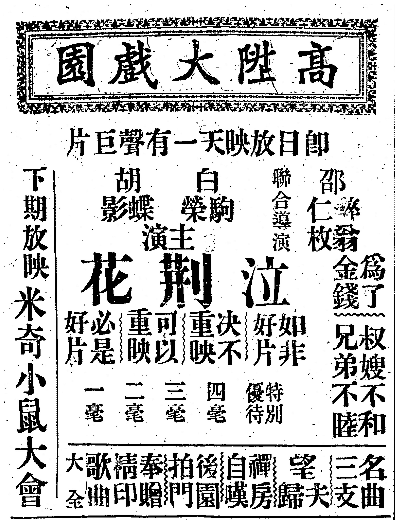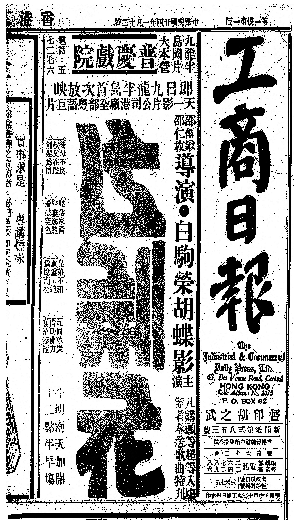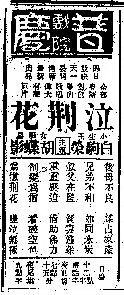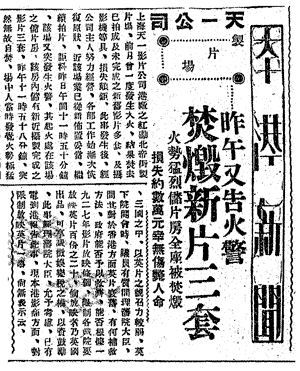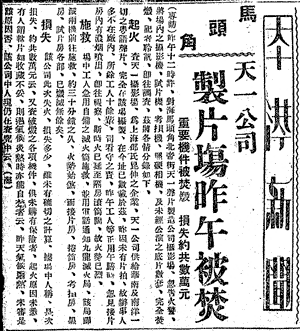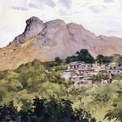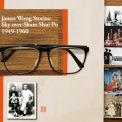As business flourished in Shanghai and Singapore, the Shaws established a branch in Hong Kong to explore the Cantonese film market. This was necessary since, from the mid-1930s onwards, increasing political turbulence on the Mainland was affecting the film industry there while Hong Kong was enjoying relative stability. Moreover, an earlier Cantonese opera film production,
White Golden Dragon (1933) – a collaboration with seasoned Cantonese opera artist Sit Kok-sin – did quite well in Guangzhou, Nanyang and Hong Kong. Runme Shaw therefore decided to establish Tianyi Hong Kong Studios in 1934 and move some of its production crew and facilities to Hong Kong.
Tianyi Hong Kong was chiefly dedicated to Cantonese filmmaking. Its inaugural movie
Mourning of the Chaste Tree Flower (1934), starring renowned Cantonese opera artists Pak Kui-wing and Wu Dip-ying, received acclaim locally and helped Tianyi Hong Kong Studios gain its footing. At the time, Tianyi Studios was located at Pak Tai Street, in the To Kwa Wan district of the Kowloon Peninsula. It boasted an area of several tens of thousand square feet, two film studios, sound-proofing, plus dark room, editing suites, preview suites, film archives and production offices – all in all, a studio of considerable scale for those days. Production wise, Tianyi focused on film genres that had mass appeal. Between 1934 and 1935, Tianyi Hong Kong Studios released more than ten films. Half of them were adaptations of Cantonese opera and three belonged to “The Country Bumpkin” series, which set off a trend of Cantonese comedy films.
In 1936, two fires broke out in Tianyi Hong Kong Studios which nearly destroyed its entire film archive. After this, Runje Shaw returned to Shanghai, withdrawing from Hong Kong for good. Runde Shaw took over Tianyi Hong Kong Studios, renamed it Nanyang Film Company and continued producing popular releases. Shanghai Tianyi’s production activities, by contrast, were nearly paralyzed with the onset of war. Until the Japanese occupation of Hong Kong in 1941, Nanyang Film Company continued feeding a stream of films to the Singapore and Malaysian markets and became the major film supplier of Shaw cinema lines in Nanyang. But then the war spread, and Hong Kong and the Nanyang regions fell to Japanese occupation too. Nanyang Film Studios in Hong Kong was taken over by Japanese troops, a serious setback to the development of the Chinese-language film industry.
